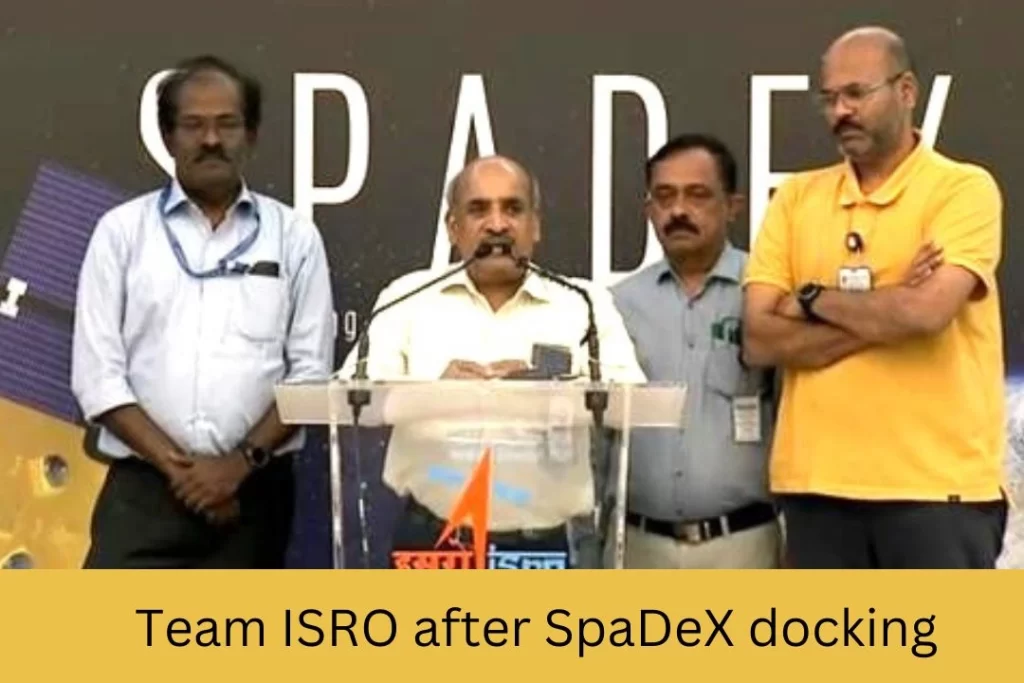In a monumental stride for India’s space program, the Indian Space Research Organisation (ISRO) achieved a groundbreaking feat with the successful execution of the SpaDeX (Space Docking Experiment) mission. This remarkable accomplishment propels India into an exclusive group of nations—alongside the USA, Russia, and China—that have mastered spacecraft docking technology.
The SpaDeX mission reached its pinnacle in the early hours of January 16, 2025, when two satellites, SDX01 (Chaser) and SDX02 (Target), launched aboard PSLV C60 on December 30, 2024, seamlessly docked in orbit. This intricate procedure was conducted under the vigilant guidance of ISRO scientists at the Mission Operations Complex (MOX) in Bengaluru.
ISRO documented the detailed steps of this technological triumph on its X (formerly Twitter) handle:
“Docking Success! A historic moment for India! The SpaDeX docking process unfolded flawlessly: maneuver from 15m to 3m hold point, precise initiation of docking, successful capture, smooth retraction, and rigidization for stability. India now stands as the fourth nation to achieve this milestone. Congratulations to Team ISRO and the entire nation!”
Following the docking, ISRO confirmed that the two satellites operated as a unified entity, with undocking and power transfer tests scheduled in subsequent days.
The SpaDeX mission is a cornerstone in ISRO’s ambitious roadmap, demonstrating vital technologies for spacecraft rendezvous, docking, and undocking. These advancements lay the groundwork for India’s futuristic aspirations, including lunar sample return missions, construction of an Indian Space Station, and sending astronauts to the Moon.
A unique feature of SpaDeX is its focus on in-orbit power transfer between docked satellites, an essential capability for future endeavors such as space robotics and extended payload operations. ISRO announced plans to separate the satellites post-undocking to independently operate their respective missions over a lifespan of up to two years.
The path to success wasn’t without hurdles. The docking, initially slated for January 7, faced delays due to the need for further ground validations and unanticipated drift between the spacecraft. ISRO skillfully addressed these challenges, ensuring the mission’s ultimate success.
The satellites, each weighing approximately 220 kilograms, were launched into a 475-kilometer circular orbit from the Satish Dhawan Space Centre in Sriharikota. ISRO scientists conducted trial maneuvers earlier this week, bringing the satellites to a 3-meter proximity before executing the docking procedure with unparalleled precision.
The SpaDeX mission represents just the beginning of ISRO’s ambitious space endeavors. With Chandrayaan-4 in the pipeline and plans for an Indian space station gaining momentum, SpaDeX stands as a testament to India’s growing technological prowess and commitment to pushing the boundaries of space exploration.
Dr. V. Narayanan, Chairman of ISRO, expressed his pride and gratitude to the team, stating, “This achievement is a testament to our unwavering dedication to innovation and excellence in space science. It marks a new dawn for India’s space program.”
As SpaDeX continues to inspire, it reinforces India’s position as a global space leader, poised to achieve even greater milestones in the future.





